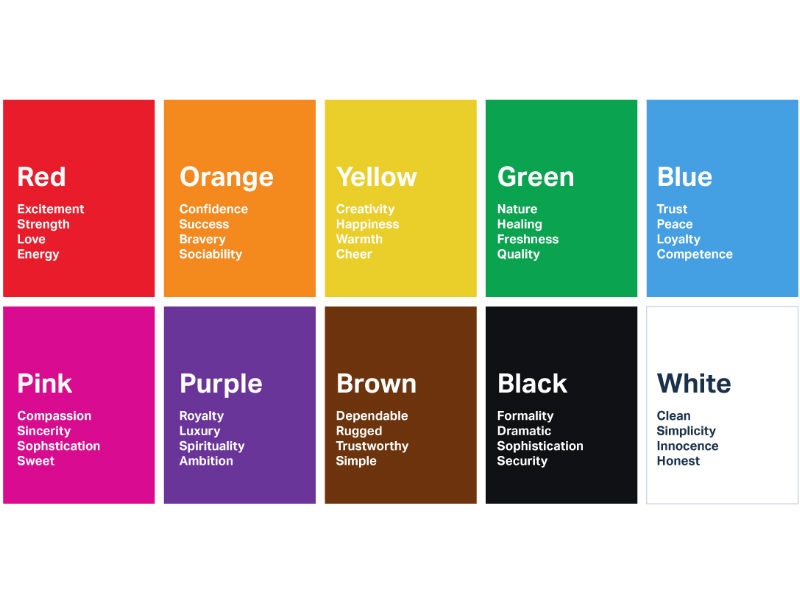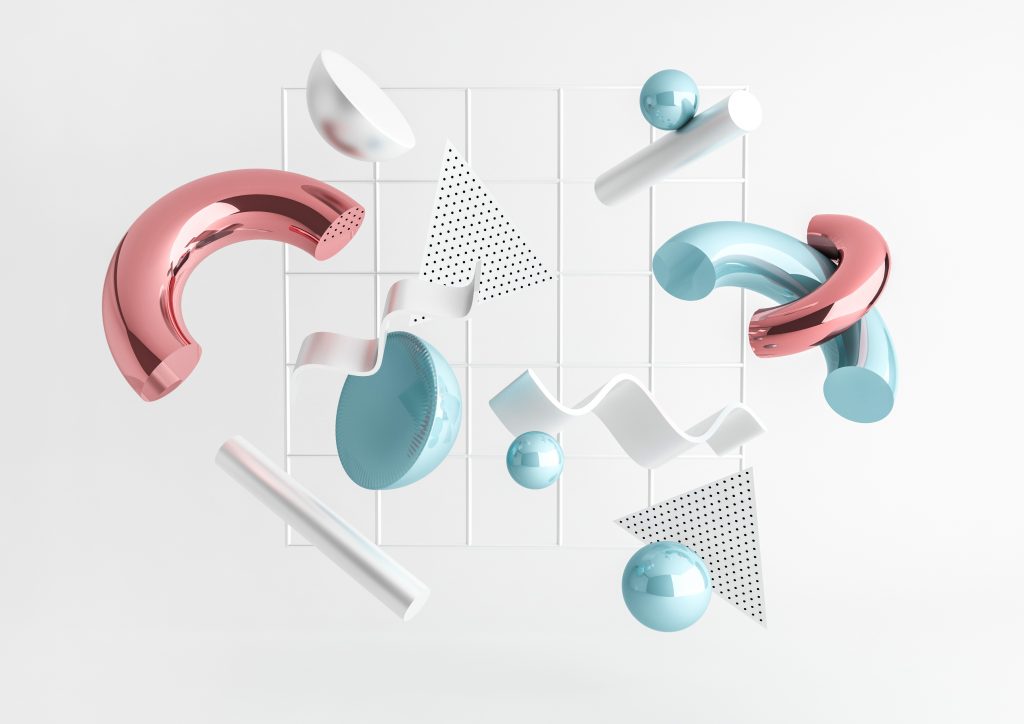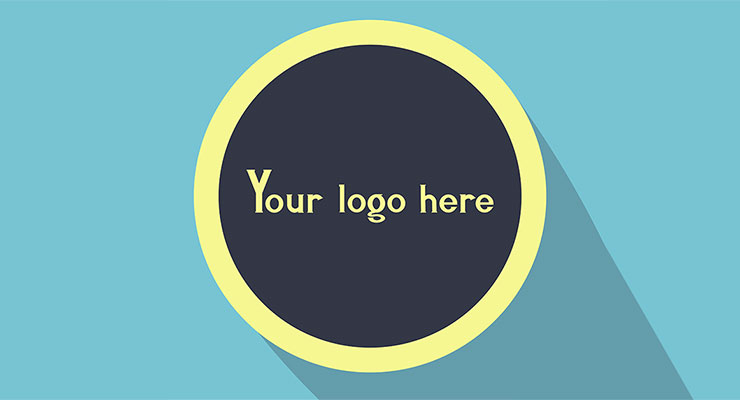Understanding the Psychology of Logo Design and Brand Perception is crucial for businesses to create a strong and lasting connection with their target audience. The Psychology of Logo Design and Brand Perception goes beyond aesthetics and delves into the intricate ways that colours, shapes, and symbols influence consumer emotions.
In the realm of business, branding is essential to creating a company’s identity and building a connection with its target market. A logo is a key component of every business since it graphically communicates the mission and core values of the company. Behind the creativity and beauty of logo design, there is an intriguing field of psychology that affects how people view and engage with a brand.
This piece explores the fascinating link between logo design and brand perception and explains the underlying psychological processes.
Table of Contents
ToggleFirst Impression of Logo Design and Brand Perception
First impressions count, and logos are frequently the first way a business interacts with potential consumers. According to studies, individuals create their first opinions of a logo and, consequently, the brand it symbolises, in just a fraction of a second. As a result, a logo’s design needs to be thoroughly thought out in order to have an immediate impression.
By comprehending the Psychology of Logo Design and Brand Perception, companies can strategically use colours like red for excitement and blue for trustworthiness to evoke desired feelings in consumers. Moreover, the Psychology of Logo Design and Brand Perception emphasizes the importance of simplicity and memorability to ensure that the logo leaves a lasting impression on potential customers. In summary, delving into the Psychology of Logo Design and Brand Perception is an essential step for companies to create a logo that effectively communicates their brand’s identity and resonates deeply with their audience.
Psychology of Colour
Colour selection is one of the most important components of logo design since it greatly affects how people feel and perceive things. Different hues have different psychological effects. For illustration:
- Red: This colour signifies passion, energy, and urgency. Brands like Coca-Cola and Netflix employ red in their logos to create excitement and evoke strong emotions.
- Blue: Blue is associated with trust, reliability, and serenity. Many tech companies, such as Facebook and IBM, incorporate blue into their logos to foster a sense of dependability.
- Green: Symbolizing nature, growth, and freshness, green is commonly used by environmentally conscious brands like Starbucks and Whole Foods.
4. Yellow: Cheerful, optimistic, and attention-grabbing, yellow is often found in logos of brands like McDonald’s and IKEA.
5. Black: Conveying sophistication, authority, and luxury, black is utilized by brands like Chanel and Adidas to establish a premium image.
Symbols and Shapes
A logo’s usage of forms and symbols has psychological importance as well. For instance, circles encourage a sense of connectedness and optimism since they stand for unity, community, and infinity. Triangles signify steadiness, power, and equilibrium. Curvy lines, on the other hand, might convey a sense of cosiness and approachability.
Additionally, certain symbols can draw on mythological or cultural connotations, which increases the logo’s resonant and enduring power. Carefully incorporating these components may improve a brand’s identity and messaging.
Simpleness and Memorability of Logo Design and Brand Perception
Consumers are more likely to remember a logo that is straightforward and instantly recognisable. The audience may become overwhelmed or perplexed by complex logos, which will make it tougher for them to remember the brand. Nike’s swoosh and Apple’s recognisable apple are two examples of logos that effectively combine simplicity and memorability.
Emotional Connection and Brand Association
A strong connection between the symbol and the brand’s principles, goods, or services is fostered through effective logo design. Customers eventually start to connect the brand’s emblem with pleasant feelings when they interact with it and have satisfying experiences. Customers are more inclined to pick that brand frequently thanks to this association’s ability to establish an emotional connection.
Evolution of logos and brand perception
To remain current, companies may alter their logos as they develop and adjust to the times. The difficulty is in preserving the brand’s identity while incorporating modern design trends. Such changes may have an impact on consumers’ impressions, sometimes favourably if they demonstrate a forward-thinking strategy and sometimes unfavourably if devoted customers feel alienated from the brand’s history.
Dimensions of Logo Design and Brand Perception
Sincerity: Consumers regard brands with sincere personalities as being sincere, straightforward, and real. They frequently employ gentle hues, small-cap typefaces, and straightforward, friendly symbols. Examples of companies that value openness and sincerity include Dove and The Body Shop.
Excitement: Brands that radiate enthusiasm are vibrant, risk-taking, and young. They make use of vibrant colours, angular forms, and lively typefaces. Both Red Bull and MTV’s logos and overall branding represent enthusiasm.
Competence: People view reliable, skilled, and trustworthy brands as being competent. They like conventional, simple designs with harmonious colour schemes. Examples include IBM and Microsoft, both of which are renowned for providing reliable goods and services.
Sophistication: Brands with sophistication have an emphasis on elegance, luxury, and high-quality goods. They frequently employ polished colours and elegant, minimalist designs. Brands with sophisticated logos include Chanel and Rolex.
Ruggedness: Tough brands imply strength, outdoor adventure, and toughness. They make use of strong typography, angular designs, and natural hues. The rough brand personas of Jeep and Timberland are excellent examples.
Analysing Thoughts and Logo Recognitions
Because the human brain analyses visuals more quickly than text, logos are an effective tool for instant brand awareness. Our brains make linkages with prior encounters and feelings associated with the brand when we view a familiar emblem. This information is retrieved automatically, which affects how we act and what we buy.
Companies strengthen these connections through repetition and consistent branding, forging a solid link between the emblem and the identity of the company. In this approach, logos are integrated into a company’s marketing plan, promoting brand recall and long-term brand loyalty.
Cultural and social factors influence Logo Design and Brand Perception
The design of logos and how people perceive brands are significantly influenced by culture and society. A sense of belonging may be evoked and logos that use culturally appropriate motifs or colours might connect with certain cultures more intimately. To prevent unintentionally upsetting or alienating consumers from different origins, designers must be aware of potential cultural differences.
Additionally, societal movements and trends can influence logo design. Eco-friendly motifs have been increasingly common in the logos of firms that care about the environment in recent years. Similar to how companies have responded to social justice problems, businesses have used their logos to show support for a variety of causes.
Logo Evolution and Brand Loyalty
Brands may elect to update their logos as they change to remain relevant in a competitive market. This adjustment, though, has potential drawbacks. While a new and contemporary design might draw in new clients and represent advancement, it also runs the danger of losing devoted supporters who have grown fond of the previous logo.
Companies must carefully manage logo evolution to maintain the brand’s basic identity while introducing modern components. Logo modifications, such as those executed by Apple and Starbucks, demonstrate how a company can revitalize itself without severing its connection to the past.
Wrapping up
Although consumers may not be aware of them, psychological cues influence their views, feelings, and behaviours towards a brand. Utilising this impact to produce a logo that represents a brand’s identity, beliefs, and objectives visually is the art and science of logo design.
A strong tool for leaving a lasting impression and fostering brand loyalty is logo design, which makes use of the subtleties of human psychology. It is possible for designers and marketers to create logos that elicit the necessary emotions and are consistent with the brand’s identity by comprehending the psychology underlying colours, forms, and symbols. The logo design will continue to be a crucial pillar in businesses’ efforts to build deep relationships with customers as they navigate the always-evolving world of branding.
Read Next: Digital Marketing Tools That Are Pure Gold









